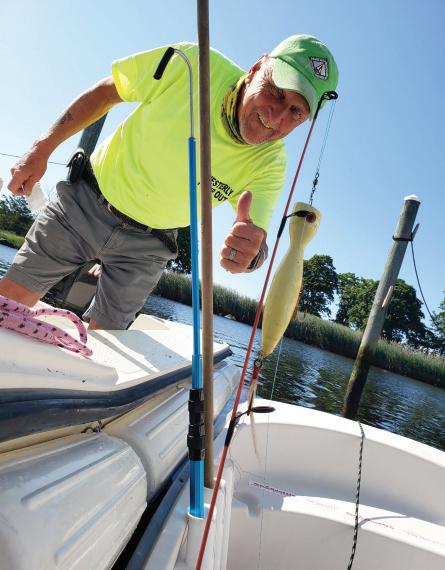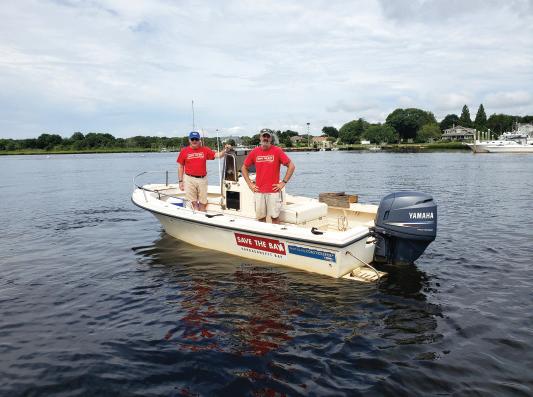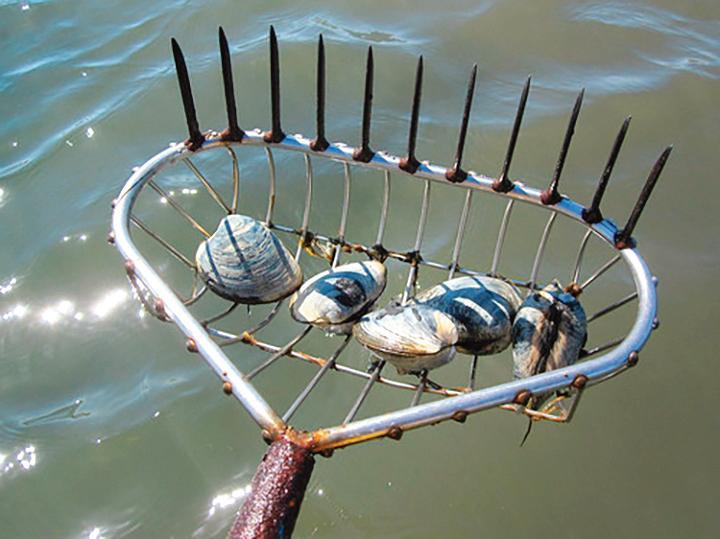
8 minute read
Changing Our Ways for the Bays
by John Tolmie
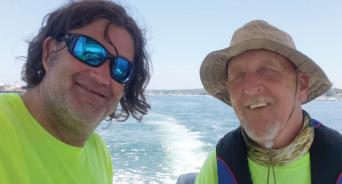
Children whose adolescence blossomed in the 70s and 80s collectively concur that alone-time with the TV was a cherished and coveted event. Parents usually slept in on the weekends, so Saturday morning cartoons were typically a sure bet. Occasionally, Mom and Dad would indulge in a few too many Friday night cocktails extending their respite. This gratuitous allotment of tube-time was devoted to Black Belt Theater or a rare Creature Double Feature. A definitive pecking order of who controlled what was watched was quite simple. Dads were at the top and kids were at the bottom. Without word or warning, fathers all possessed the uncanny ability to appear just as that final epic kung fu battle was about to commence. Bruce Lee was unceremoniously dismissed in exchange for eight hours of golf, golf talk, golf claps, and golfing commercials. The “go outside and play” command soon followed as the young’uns begrudgingly set off to find entertainment outdoors until dusk. Sunset was the universal Bat-Signal that supper was nigh as families congregated at the dinner table for some quality time together. The excited conversation about what was going to be watched after the dishes were done was the predominant subject most evenings. Real People was the universal choice, or That’s Incredible at a close second, with nature shows landing in a comfy third place. Marty Stauffer's Wild America was a solid pick alongside the old guy who narrated Mutual of Omaha's Wild Kingdom.
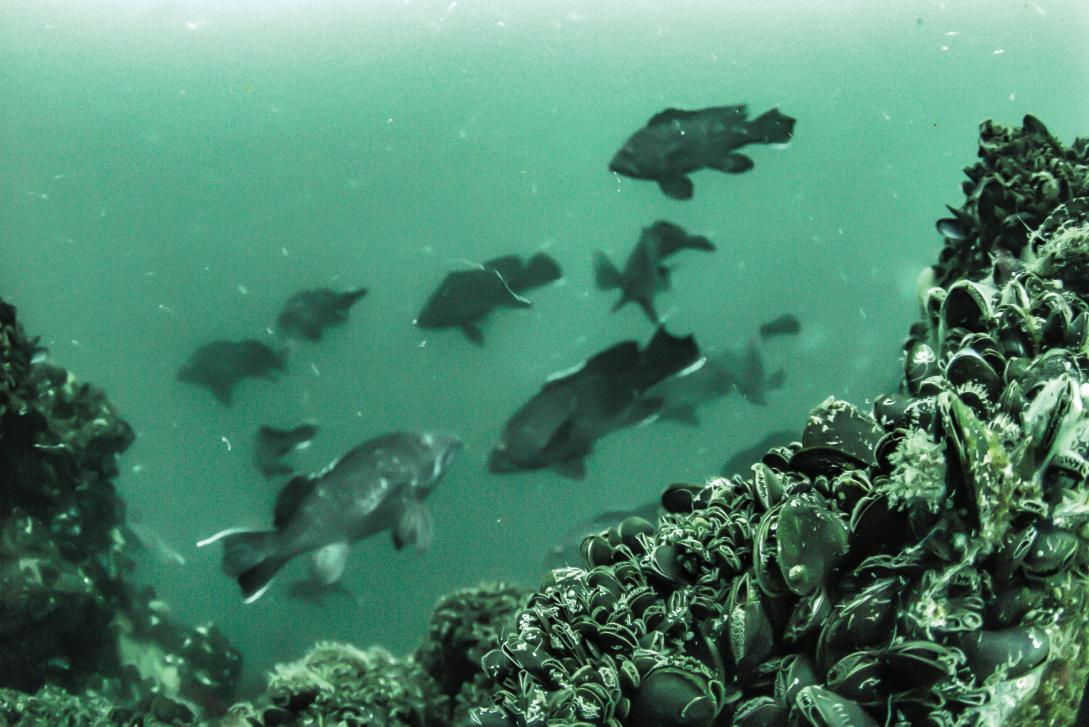
But the crème de la crème for this crusty lad was of course The Undersea World of Jacques Cousteau. That one program fostered my curiosity for all things wild which would follow me for years to come. However, my affinity for nature documentaries has wavered in recent years as I now find myself avoiding them more and more. They just bum me out. Even as the most incredible footage of our planet continues to be revealed, each episode ends with the warning that all will soon disappear. We all adore our eco-champion Sir David Attenborough. Yet even his latest documentary concluded with a global admonishment. With all the bad news I needed to find some encouragement and began a quest to find what is being done to improve the environment in my part of the world. This salty mariner looked to the sea to find measurable changes along the coast of Connecticut and immediately found inspiration that we are in fact making a difference.
I dare to say that most ocean-loving Nutmeggers have at one time or another sailed the ferry from New London to Block Island for a day of scooter riding, too much sun, and undoubtedly a little too much fun. The island is an ethereal oasis where folks are given every permission to let loose. What happens on Block Island stays on Block Island as they say. But, before the sun sets for a night on the town, a must-do is a visit to the lighthouse on the Bluffs for a breathtaking view of the majestic Atlantic Ocean. Just a few years ago the controversy of an offshore wind farm was settled and approved resulting in five gigantic windmills that presently encumber the once pristine horizon.

The scuttlebutt recounts that the naysayers had resisted the venture to preserve the unspoiled panoramic and deemed the project an obtrusive eyesore. I get that, I don't want to see giant machines poking out of Mother Ocean. However, these aesthetically out-of-place structures are essential reminders that preserving our environment is more important than mere visual displeasures. It is well known that offshore wind farms are not moneymakers. The companies that build them do profit and the workers who construct remain employed. But the cost to erect and maintain these steel constructs is nearly equivalent to the revenue from the electricity they generate. The local economy is also supported as boat captains carry tourists on sightseeing cruises to get a closer look. Environmentally, the benefits are numerous. Obviously, the goal of reducing the carbon footprint is met by harnessing clean energy. However, unseen to those who dwell above the waves lies another unintentional win for Mother Nature. The structures have attracted an abundance of life where prey seeks shelter from predators. Just below the surface, plump mussels coat the steel tubing providing food for several species of native New England fish. These artificial reefs have rapidly promoted a new healthy population of life that will continue to flourish. In return, anglers and those who make a living at the end of a hook, are reaping the rewards as well.
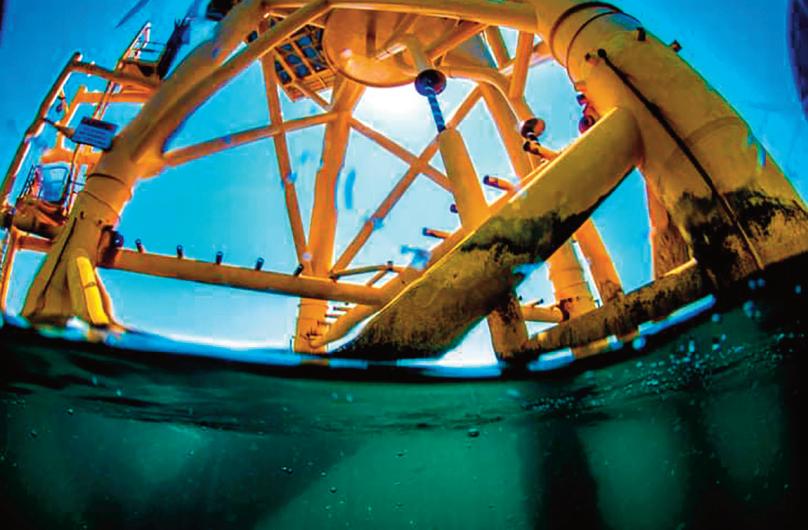
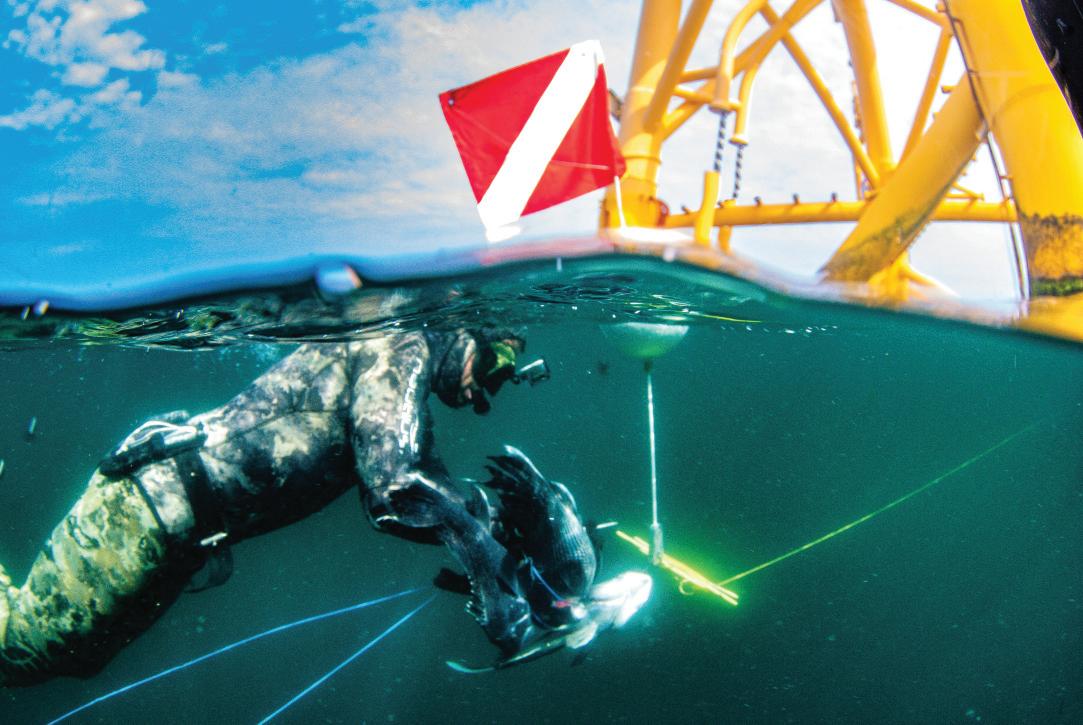
Other than obstructing the view of a pristine horizon, these structures provide a small example of man and nature living cohesively together. ponds across Connecticut’s rugged shoreline. These fragile environments are constantly being tested as boat traffic, drainage, chemicals, and other human activity continue to threaten the health of these estuaries. Many oceanic species begin their lives in these shallow waters before heading out to sea to mature. For over a century it had been common practice for boaters to empty their waste directly into our coastal coves. It has only been a few decades since laws were passed requiring boaters to have their holding tanks pumped out at specific locations. However, with so few pumping stations initially available, many boaters continued to dump their sewage overboard risking hefty fines and further damaging the already frail brackish waters. A better answer came soon after in the form of small boats outfitted with large holding tanks and a pump that could empty the sewage anywhere another vessel was moored. Pump-out boats are now operating everywhere along Connecticut’s coast, providing a much-enjoyed convenience for today's growing fleet of recreational sailors.

The Pawcatuck River, which borders both Connecticut and Rhode Island, shares a pump-out boat service that encompasses the river, Watch Hill, Napatree, Sandy Point, and Stonington Borough. The federally funded operation is managed by the town of Westerly, Rhode Island under the direction of Connecticut’s Department of Energy and Environmental Protection. The impact of the past is receding as the health of our bays is returning. Not only is this service helping to preserve juvenile sea life, but it is also protecting beachgoers and swimmers from health risks posed by the contamination. This uncommon multi-governmental cooperation also offers seasonal employment for part-time workers, college students, and retirees. After retiring last year from building submarines, this Crusty Old Diver joined the pump-out team and captains a seagoing honey-wagon a few days a week. The benefit has also followed me home where my wife compliments me as being number one at dealing with number two.

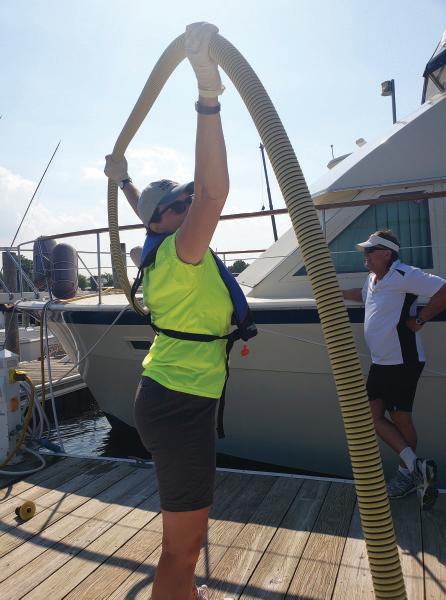
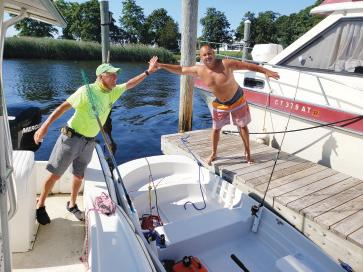
Over the past few years, new regulations have been imposed on the harvesting of striped bass. The daily creel limit went from two fish to one. However, that didn't seem to be helping much so a size limit was imposed where only fish between 28 inches and 35 inches could be taken. This action was to protect the juvenile fish as well as the large breeders. Of course, the new rules went over like a lead balloon for many anglers who now must work a little harder to land a keeper for the grill. As a fisherman myself, I felt the inconvenience, but also relief that we are protecting one of New England's most iconic aquatic species. Each year the regulations become a bit stricter, challenging the fortitude and skill of anglers across the state. Wild-caught fish are one of the only remaining natural resources that are consumed as most of our food comes from farms.
Our fisheries must remain healthy and protected for future generations to enjoy. As well, most coastal communities have volunteer shellfish commissions that seed areas with clams, oysters, and other species of mollusk. Giving back what we take from the sea is a wonderful cooperative bond, and the shellfish commissions are a perfect example of a symbiotic relationship between man and nature. Bird sanctuaries are multiplying along our coastal waters as well. One such example is at Sandy Point laying due east of Stonington. After the 1938 hurricane which wiped out all the houses along Sandy Point, the area became a popular destination for boaters and beachgoers. Today, both man and bird congregate in harmony along the sandbar. The Sandy Point Association oversees the preservation of the sanctuary and uses donations from visitors to encourage our avian friends with a safe place who now thrive alongside the many visitors who flock there during the warmer months.
Finally, our friends from Save The Bay are on the water daily, testing our inner coastal waters for our safety and educating our youth the importance of keeping our waters clean. All is not lost, my friends. We are doing much to change our past and ignorant ways. I hope that the above examples inspire you to look for other things that are being done to preserve our precious environment right here in the Nutmeg State
